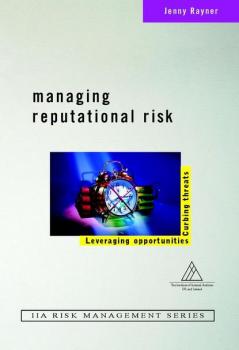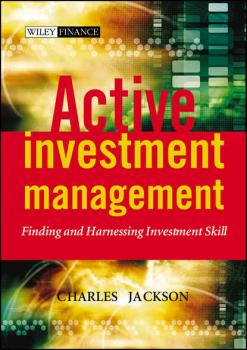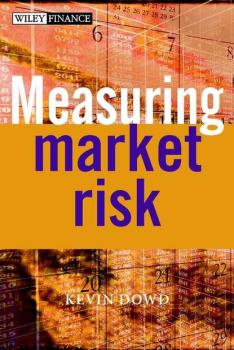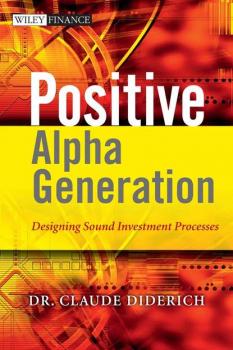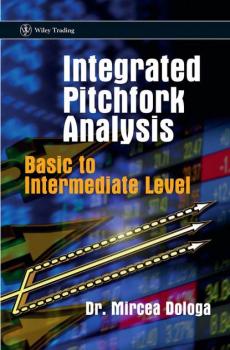ТОП просматриваемых книг сайта:
Группа авторов
Список книг автора Группа авторовАннотация
Written by the chair of the LEED-Neighborhood Development (LEED-ND) initiative, Sustainable Urbanism: Urban Design with Nature is both an urgent call to action and a comprehensive introduction to «sustainable urbanism»–the emerging and growing design reform movement that combines the creation and enhancement of walkable and diverse places with the need to build high-performance infrastructure and buildings. Providing a historic perspective on the standards and regulations that got us to where we are today in terms of urban lifestyle and attempts at reform, Douglas Farr makes a powerful case for sustainable urbanism, showing where we went wrong, and where we need to go. He then explains how to implement sustainable urbanism through leadership and communication in cities, communities, and neighborhoods. Essays written by Farr and others delve into such issues as: Increasing sustainability through density. Integrating transportation and land use. Creating sustainable neighborhoods, including housing, car-free areas, locally-owned stores, walkable neighborhoods, and universal accessibility. The health and environmental benefits of linking humans to nature, including walk-to open spaces, neighborhood stormwater systems and waste treatment, and food production. High performance buildings and district energy systems. Enriching the argument are in-depth case studies in sustainable urbanism, from BedZED in London, England and Newington in Sydney, Australia, to New Railroad Square in Santa Rosa, California and Dongtan, Shanghai, China. An epilogue looks to the future of sustainable urbanism over the next 200 years. At once solidly researched and passionately argued, Sustainable Urbanism is the ideal guidebook for urban designers, planners, and architects who are eager to make a positive impact on our–and our descendants'–buildings, cities, and lives.
Аннотация
This core textbook brings together for the first time the technical, legal, social and philosophical issues under the umbrella of architectural technology. Part 1 covers the influences that affect the way we build – the environmental agenda, the human factors, buildability, time and costs. Part 2 takes the reader through the life of a typical building project – from briefing, through design and assembly, to use and eventual disassembly. Part 3 tackles some of the underlying issues facing the architectural technologist – from the communication of details to technological innovation. Architectural Technolgy bridges the knowledge gap between design and construction, enabling the architectural technologist to apply their unique skill in a creative and innovative way. «As a textbook aimed at those studying for membership of BIAT this is clearly very thorough and has the recommendation of their Vice President Education. However, it can also justifiably earn its place on the bookshelf of anybody involved in the construction process as a reference and to aid an understanding of others he/she will be working with to develop an environment of which to be proud.» Building Engineer, July 2002
Аннотация
An «anatomical» study of building systems integration with guidelines for practical applications Through a systems approach to buildings, Integrated Buildings: The Systems Basis of Architecture details the practice of integration to bridge the gap between the design intentions and technical demands of building projects. Analytic methods are introduced that illustrate the value, benefit, and application of systems integration, as well as guidelines for selecting technical systems in the conceptual, schematic, and design development stages of projects. Landmark structures such as Eero Saarinen's John Deere Headquarters, Renzo Piano's Kansai International Airport, Glenn Murcutt's Magney House, and Richard Rogers's Lloyd's of London headquarters are presented as part of an extensive collection of case studies organized into seven categories: Laboratories Offices Pavilions Green Architecture High Tech Architecture Airport Terminals Residential Architecture Advanced material is provided on methods of integration, including an overview of integration topics, the systems basis of architecture, and the integration potential of various building systems. An expanded case study of Ibsen Nelsen's design for the Pacific Museum of Flight is used to demonstrate case study methods for tracing integration through any work of architecture. Visually enhanced with more than 300 illustrations, diagrams, and photographs, Integrated Buildings: The Systems Basis of Architecture is a valuable reference guide for architecture and civil engineering students, as well as architects, engineers, and other professionals in the construction industry.
Аннотация
Industrial Design: Materials and Manufacturing Guide, Second Edition provides the detailed coverage of materials and manufacturing processes that industrial designers need without the in-depth and overly technical discussions commonly directed toward engineers. Author Jim Lesko gives you the practical knowledge you need to develop a real-world understanding of materials and processes and make informed choices for industrial design projects. In this book, you will find everything from basic terminology to valuable insights on why certain shapes work best for particular applications. You'll learn how to extract the best performance from all of the most commonly used methods and materials.
Аннотация
Market players put their jobs on the line with every position they take. Any fixed income investor in the circumstance of being granted one wish would probably want to know what interest rates are going to do in the future. Economists and others have constructed models of interest rate behaviour, but no model works in all circumstances. The main aim of this book is to straddle the different worlds of theoretical models and practical market experience, while offering an interdisciplinary framework for fixed income investing and trading. A focussed but very practical approach to fixed-income investment, aimed at practitioner market Contains investment checklists and interviews with market practitioners Offers an interdisciplinary framework for fixed-income investing and trading, and combines worlds of theoretical models and practical market experience
Аннотация
Managing Reputational Risk shows how any organisation can apply simple risk management principles to build stakeholder confidence and safeguard and enhance reputation. It positions reputation and its associated threats and opportunities where they rightfully belong: in the domain of the board room, at the heart of good corporate governance, leading-edge strategy development, effective risk management, corporate responsibility, comprehensive assurance and transparent communications. Illustrates, through numerous examples of good – and not so good – business practice, the importance of respecting and nurturing reputation as a critical intangible asset. Demonstrates how mastery of reputation risks can enable an organisation to be seen as responsible and responsive, as well as equipping it to meet the challenges that lie ahead.
Аннотация
Active Investment Management looks at where active management has come from, where it is today, what problems it faces and where the answers to these questions are leading it. The book addresses the major issues concerning the key groups within the industry. Charles Jackson's wonderfully readable book will be essential reading for the practitioner and is broken down into five sections covering the whole spectrum of active investment management: * asset classes and products * balancing risk and return * active product selection * the nature of skill * the price of skill .
Аннотация
The most up-to-date resource on market risk methodologies Financial professionals in both the front and back office require an understanding of market risk and how to manage it. Measuring Market Risk provides this understanding with an overview of the most recent innovations in Value at Risk (VaR) and Expected Tail Loss (ETL) estimation. This book is filled with clear and accessible explanations of complex issues that arise in risk measuring-from parametric versus nonparametric estimation to incre-mental and component risks. Measuring Market Risk also includes accompanying software written in Matlab(r)-allowing the reader to simulate and run the examples in the book.
Аннотация
Diderich describes tools and techniques, which can be used to develop quantitative models for actively managing investment products, and focuses on how theoretical models can and should be used in practice. He describes the interaction between different elements of an investment process's value chain in a single and consistent framework. A key focus is placed on illustrating the theory with real world examples. At the end of the book the reader will be capable of designing or enhancing an investment process for an investment or portfolio managers products from start to finish. * Increased pressure to add value through investments makes this a hot topic in the investment world * Combined theoretical and practical approach makes this book appealing to a wide audience of quants and investors * The only book to show how to design and implement quantitative models for gaining positive alpha
Аннотация
Integrated Pitchfork Analysis: Basic to Intermediate Level is an introductory text to the branch of Technical Analysis which uses the Andrews' pitchfork trading technique. Designed for traders with no experience of Pitchfork Analysis this book demonstrates how to analyse the markets and trade using pitchfork analysis, assisting the novice trader in achieving a consistent performance. Written by experienced trader, Dr Mircea Dologa, founder of www.pitchforktrader.com, the book begins by introducing and discussing the basic theory of pitchfork trading, providing a description of the technique, how to analyse the charts and how to make a decision based on that analysis. It then moves on to the more practical aspects about the low risk high-probability trade from its inception to its termination. Crucially expert guidance on money management and risk management techniques – when to get in, when to get out and where to locate the initial or trailing stops is also provided. Ultimately Integrated Pitchfork Analysis: Basic to Intermediate Level will teach you how to trade, how to follow the markets and how to consistently make money. Reviews “Dr. Mircea Dologa picks up where Dr. Alan Andrews left off in his breakthrough studies of “pitchfork” pattern analysis. In his new book, the author has taken the interpretation and application of “pitchfork” patterns to an entirely new level. After studying Dr. Dologa’s well written and very well illustrated book I will never look at a chart the same way again. What Dr. Dologa has done with “pitchforks” is absolutely amazing. You’ve got to read it to believe it. Pitchforks patterns can provide so much practical and useful information that you will be referring to this book over and over. The book ends on a high note with an excellent chapter on Case Studies and Money Management. Traders will want to keep this powerful book handy for frequent reference. Highly recommended.” Chuck LeBeau, Director of Quantitative Analysis for SmartStops.net and co-author of Computer Analysis of the Futures Market, noted trader, lecturer and trading systems developer. “Dr. Mircea Dologa’s book, Integrated Pitchfork Analysis, combines the breadth of evolving theory with the depth of experience acquired from years of practical application, leaving almost no stone unturned in an exploration of the Pitchfork and its application to profitable short-term trading. Many of Dr. Dologa’s ideas are truly innovative, reflecting his understanding of human nature. It would be difficult to find a more complete coverage of Pitchfork trading. It is a mine of (literally) valuable information.” Tony Plummer, Director, Helmsman Economics Ltd. “It has indeed been a privilege for me to have access to Dr Mircea Dologa’s amazing analysis which I consider to be an extremely important contribution to Technical Analysis. His development of Integrated Pitchfork Analysis in synergy with existing state of-the-art trading tools resulting in an easy to use professional edge technique, has not been previously utilized. This undoubtedly increases the improvement of trading accuracy, leading to enhanced confidence with greater profitability for both trading and investing. This book is truly a remarkable achievement in the field of Technical Analysis and Dr. Dologa, like myself, is motivated to educate traders and investors on the wonderful world of Technical Analysis and how it can help them in these volatile markets. I believe Dr. Dologa will join the true Market Masters of the 21st Century.” Dawn Bolton-Sm






